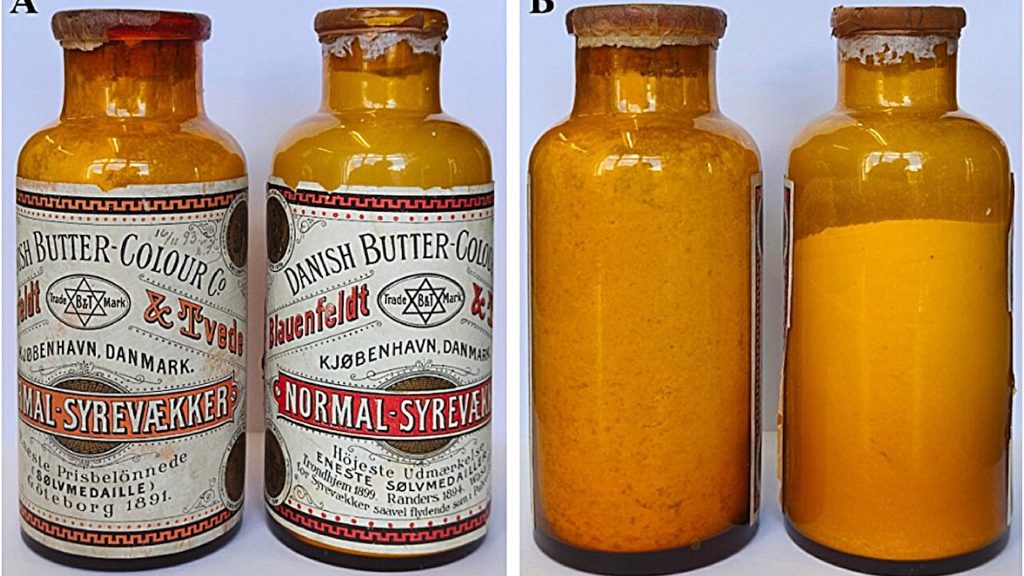For over a century, simple lactic acid bacteria has been one of the most reliable additives to keep food and drinks safe for over a century. It goes in butter, cheese, and other dairy products to help extend their shelf life. Now, a team in Denmark has uncovered some of the preservation aid’s earliest examples. Their findings, published in the International Dairy Journal, only come after a chance discovery hidden away in the bowels of a university basement.
Lactic acid doesn’t simply add an extra “zing” to foods and drinks, it helps them stay fresher longer The microscopic organisms acidify their surrounding environment, and in the process displace the other species that might otherwise make you sick. Although widespread today, Denmark was one of the first countries to enlist lactic acid bacteria’s help at an industrial scale, particularly for its dairy products.
While cleaning out a basement underneath greenhouses at the University of Copenhagen, researchers spotted a pair of bottles that contained white powder. The labels indicated that they contained lactic acid bacteria cultures that date back to the late 1800s. It didn’t take long for the team to use advanced DNA sequencing in the hopes of confirming the contents. Although it wasn’t initially clear if they would be successful, the researchers soon matched the bacteria to database examples of those used by Danish dairies after pasteurization.
“It was like opening a kind of microbiological relic. The fact that we were able to extract genetic information from bacteria used in Danish butter production 130 years ago was far more than we had dared to hope for,” microbiologist and study co-author Jørgen Leisner recounted in a statement.
Leisner and colleagues identified DNA from Lactococcus cremoris, a bacterium that is still used to acidify milk today. They also showed the culture featured the genes necessary for producing diactyl, a flavor compound associated with a buttery aroma.
“This shows that even back then, they had bacteria with precisely the properties that are desirable in the fermented milk products we have today,” added study co-author Dennis Sandris.
It wasn’t all healthy discoveries, however. Analysis revealed a heavy presence of Cutibacterium acnes, a common pimple-causing nuisance. Unlike other species, acne bacteria feature stronger cell walls in order to survive atop skin. This means it also breaks down more slowly, which is why so much of it could still be found in the bottles even after 130 years. Some other unwanted extras included DNA traces of often pathogenic bacteria like Staphylococcus aureus and Vibrio furnissii, a bacteria associated with stomach infections contracted from improperly cooked shellfish.
Co-author Nathalia Brichet added that the lucky finds are both a testament to early scientific innovations and show how far food safety has come since.
“Overall, the contents of the bottles testify to the standardization of a dairy product that every farming family used to make themselves in a jar of sour milk kept close to the stove,” she said. “But it also shows that hygiene conditions were still different from those we have today.”

